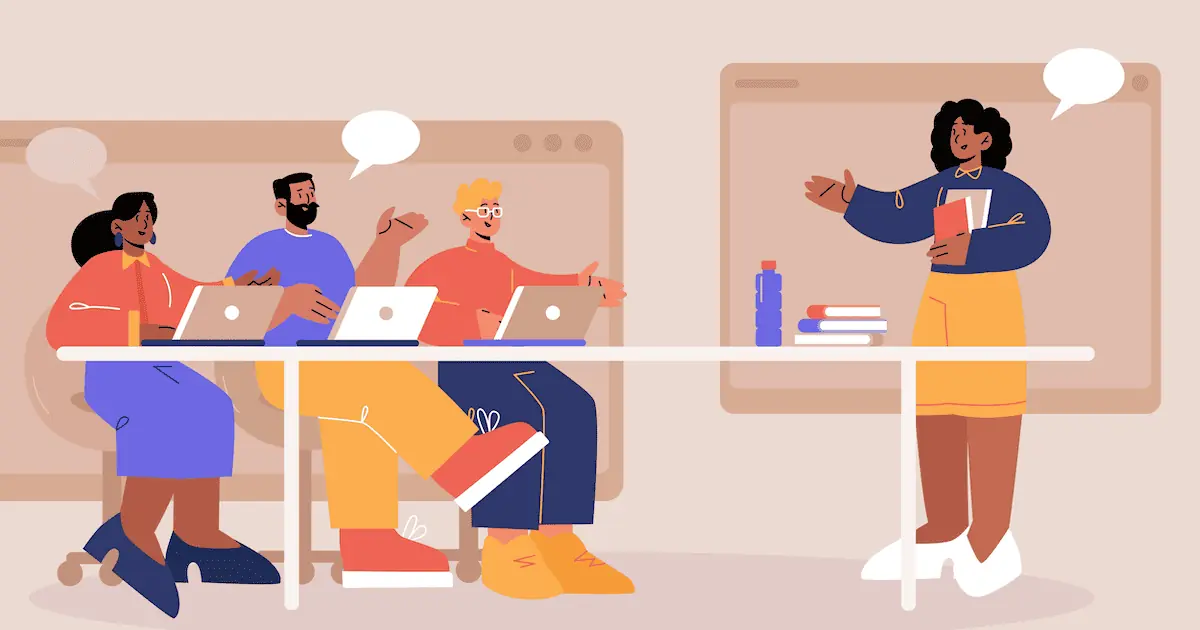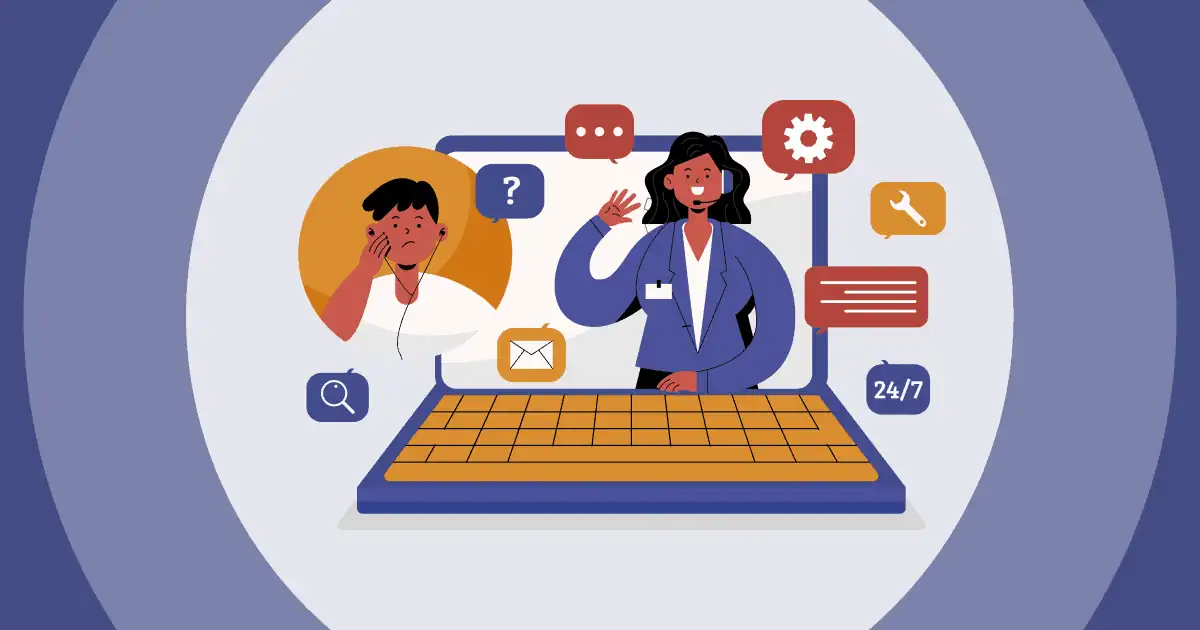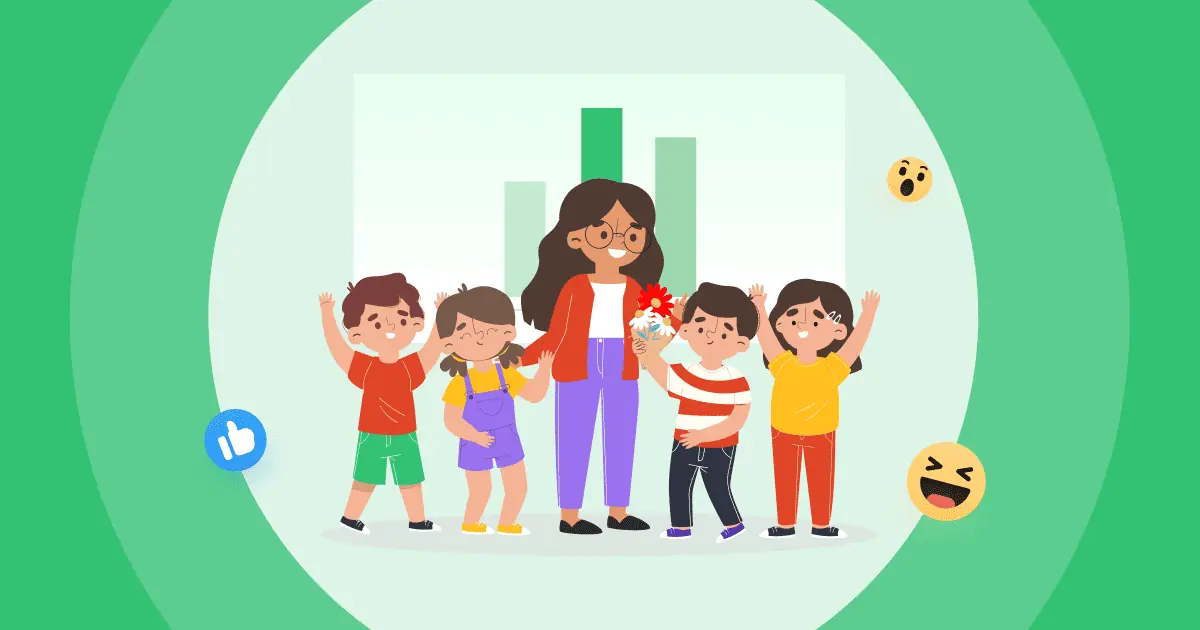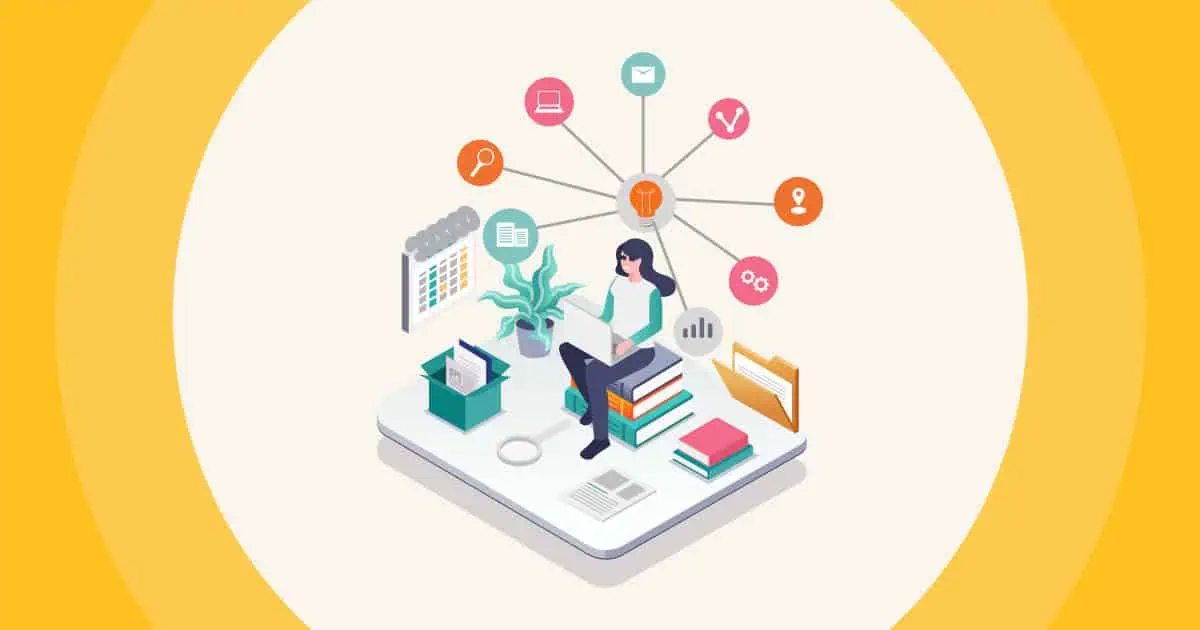“Online school culture is constantly wondering if there’s a sneaky little assignment you missed, is it tucked under modules, worksheets, or heaven forbid, announcements? Who’s to say?”
- Dannela
Relatable, isn’t it?
Have you ever wondered why this happens? Online learning has made it easy to continue classes without worrying about place and time, but it also has created challenges in effective communication.
One of the main disadvantages is that it lacks a sense of community. Before, students had a sense of belonging when they attended physical classes. There was an opportunity for discussions and communication to happen, and you didn’t have to struggle as much to get the students to form groups or share their daily tasks.
Let’s be honest. We are at that stage in e-learning where most students unmute themselves just to say bye at the end of the lesson. So, how do you add value to your classes and develop meaningful relationships as a teacher?
- Humanising Online Communication
- #1 - Active Listening
- #2 - Connecting on a Human Level
- #3 - Confidence
- #4 - Non-Verbal Cues
- #5 - Peer Support
- #6 - Feedback
- #7 - Different Communication
- The Last Two Cents
Humanising Online Communication
The first question is, “why are you communicating?” What’s the result you want to achieve through effective communication with the students? Is it just wanting the students to learn and score marks, or is it also because you want to be heard and understood?
Let’s say you have an announcement about extending the deadline for an assignment. This means you are giving the students more time to make necessary improvements to their assignments.
Make sure your students understand the emotion behind your announcement. Rather than simply sending it off as another single email or message on your virtual bulletin board, you can tell them to use that one week to ask questions and get clarifications for their doubts from you.
This is the first step - to create a balance between the professional and personal aspects of being a teacher.
Yeah! It can be quite tricky to draw a line between being the “cool teacher” and being a teacher who the kids look up to. But it’s not impossible.
Effective online communication between students and teachers must be frequent, intentional and multifaceted. The good news is that you can make this happen with the help of various online learning tools and a few tricks.
7 Tips to Master Effective Communication in an Online Classroom
In a virtual learning environment, there’s a lack of body language. Yes, we can make do with video, but communication can start to fall apart when you and your students can’t express themselves in a live setting.
You can never fully compensate for the physical environment. Still, some tricks you can implement in the virtual classroom could improve the communication between you and your students.
Let’s take a look at them.
#1 - Active Listening
You should encourage your students to listen actively during an online class. It’s not as easy as it sounds. We all know that listening is an important part of any communication, but it is often forgotten. There are a couple of ways you can ensure active listening in an online class. You can include focus group discussions, brainstorming activities and even debate sessions in the class. Apart from that, in every decision, you make related to classroom activities, try to involve your students too.
#2 - Connecting on a Human Level
Icebreakers are always one of the effective ways to start a class. Along with the games and activities, try to make personal conversations a part of it. Ask them how their day is, and encourage them to express their feelings. You could even have a quick retrospective session at the beginning of each class to learn more about their pain points and their thoughts about the current activities. This gives reassurance to the students that they’re being heard and you’re not just there to teach them theories and formulas; you’ll be a person they can count on.
#3 - Confidence

Online learning comes with many challenges - it could be an online tool crashing, your internet connection getting disrupted now and then, or even your pets making noise in the background. The key is not to lose confidence and embrace these things as it comes. While you support yourself, make sure you support your students too.
Let them know that a disturbance in their surroundings is nothing to be ashamed of and that you can work together to improve things. If any of your students miss out on a portion due to a technical glitch, you could either have an additional class to make up for it or ask their peers to guide them.
#4 - Non-Verbal Cues
Often, non-verbal cues get lost in a virtual setup. Many students might turn off their cameras for various reasons - they may be camera-shy, they might not want others to see how messy their room is, or they might even be fearful that they would be judged for their surroundings. Ensure them that it’s a safe space and they can be themselves - just as they are in a physical environment. One of the ways to do this is to have a custom wallpaper set for your class, which they can use during the Zoom lessons.
#5 - Peer Support
Not every student in a classroom will have the same lifestyle, circumstances or resources. Unlike a physical classroom where they have communal access to school resources and learning tools, being in their own space could bring out insecurities and complexes among students. It is important for the teacher to be open and help other students open up their minds and ask the students to help each other feel comfortable.
It could be having a peer support group for those struggling to learn lessons, helping those in need to build confidence, or making paid resources accessible for those who cannot afford them.
#6 - Feedback
There’s a general misconception that you cannot have an honest conversation with teachers. That’s not true, and as a teacher, you should be able to prove that students can talk freely with you. Make sure you always have a little time dedicated to hearing student feedback. This could be a Q&A session at the end of each class, or a survey, depending on the level of the class. This will help you in providing better learning experiences to the students, and it will add more value to the students too.
#7 - Different Modes of Communication
Teachers are always looking for an all-in-one tool for all their teaching needs. Say, for example, a learning management system like Google Classroom, where you can have all the communication with your students on one single platform. Yes, it’s convenient, but after a while, students will get bored of seeing the same interface and virtual environment. You can try mixing different tools and communication mediums to prevent this from happening.
You can use tools like VoiceThread to make the video lessons interactive, allowing students to comment on videos shared in the class in real-time; or an interactive online whiteboard like Miro. This could aid the live presentation experience and make it a better one.
The Last Two Cents…
Developing an effective communication strategy for your online class is not an overnight process. It takes a little time and effort, but it’s all worth it. Are you looking for more ways to make your online classroom experience better? Don’t forget to check out more innovative teaching methods here!








